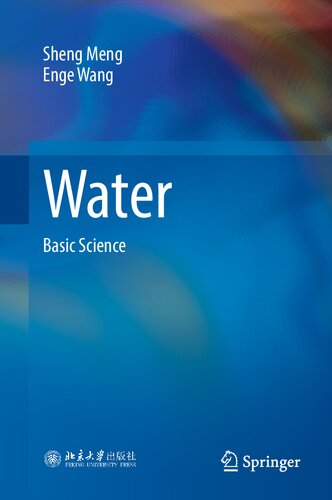

Most ebook files are in PDF format, so you can easily read them using various software such as Foxit Reader or directly on the Google Chrome browser.
Some ebook files are released by publishers in other formats such as .awz, .mobi, .epub, .fb2, etc. You may need to install specific software to read these formats on mobile/PC, such as Calibre.
Please read the tutorial at this link: https://ebookbell.com/faq
We offer FREE conversion to the popular formats you request; however, this may take some time. Therefore, right after payment, please email us, and we will try to provide the service as quickly as possible.
For some exceptional file formats or broken links (if any), please refrain from opening any disputes. Instead, email us first, and we will try to assist within a maximum of 6 hours.
EbookBell Team

4.7
106 reviewsThis book highlights the fundamentals for understanding the essential problems and latest progresses in basic water science. Water is the most abundant, fundamental and important matter in nature. Arguably it is also the material that human beings study the most but misunderstand the most. Compared with the environmental science and engineering research activities on water resources, water pollution and water usage closely related to social problems at the macro level, basic scientific research on water at the molecular level has just emerged, the impact of which is not fully recognized yet. This book is devoted to introducing some important advances in the field of basic water science in past decades, with a particular emphasis on recent results on water and the interactions between water and solid surfaces at the molecular level. Starting from introducing concepts and popular theoretical and experimental methods for basic water research, this book mainly focuses on the atomic composition, electronic structure, and physicochemical properties of water molecules, water clusters and water layers (including surface water layers and water surface layers), rules for water adsorption on metals, oxides, and other typical solid surfaces such as salt, as well as the microscopic processes and mechanisms of water diffusion, wetting, decomposition and phase transformations under a variety of conditions. It is a good reference book for students and researchers in water-related science.